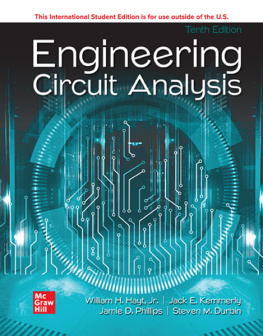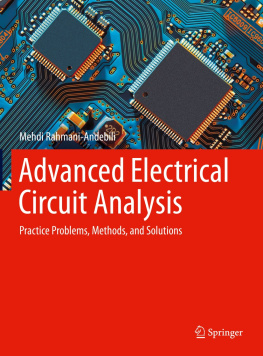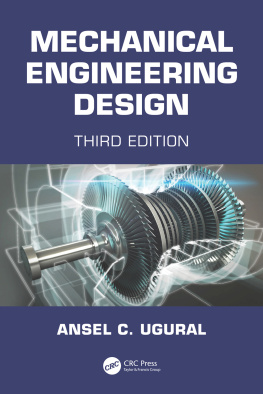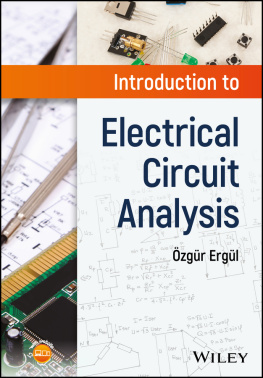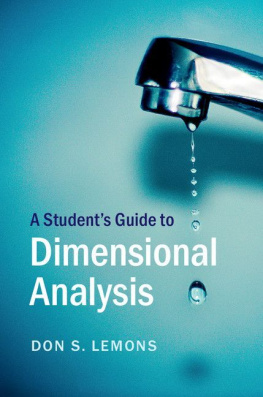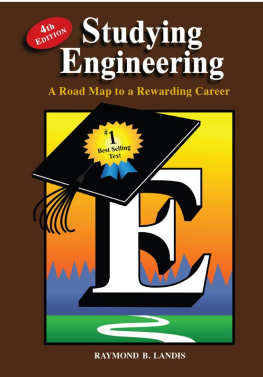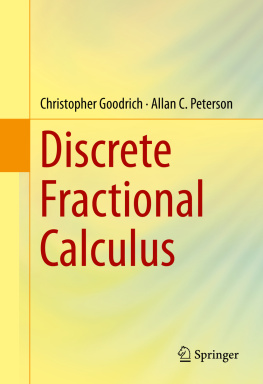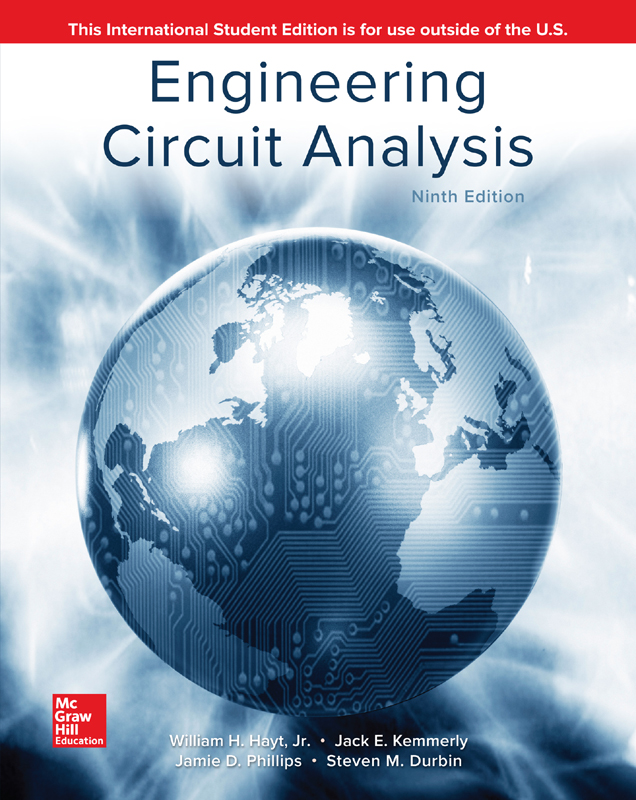Table of Contents
i
ENGINEERING CIRCUIT ANALYSIS
iii
ENGINEERING CIRCUIT ANALYSIS
NINTH EDITION
William H. Hayt, Jr. (deceased)
Purdue University
Jack E. Kemmerly (deceased)
California State University
Jamie D. Phillips
University of Michigan
Steven M. Durbin
Western Michigan University

iv

ENGINEERING CIRCUIT ANALYSIS
Published by McGraw-Hill Education, 2 Penn Plaza, New York, NY 10121. Copyright 2019 by McGraw-Hill Education. All rights reserved. Printed in the United States of America. No part of this publication may be reproduced or distributed in any form or by any means, or stored in a database or retrieval system, without the prior written consent of McGraw-Hill Education, including, but not limited to, in any network or other electronic storage or transmission, or broadcast for distance learning.
Some ancillaries, including electronic and print components, may not be available to customers outside the United States.
This book is printed on acid-free paper.
1 2 3 4 5 6 7 8 9 LWI 21 20 19 18
ISBN 978-1-260-08488-7
MHID 1-260-08488-4
Cover Image: Martin Barraud/Getty Images
All credits appearing on page or at the end of the book are considered to be an extension of the copyright page.
The Internet addresses listed in the text were accurate at the time of publication. The inclusion of a website does not indicate an endorsement by the authors or McGraw-Hill Education, and McGraw-Hill Education does not guarantee the accuracy of the information presented at these sites.
mheducation.com/highered
v
To Brooke and Jamie.
My short circuit to happiness. J.D. Phillips
To Sean and Kristi.
The best part of every day. S.M. Durbin
vii
ABOUT THE AUTHORS
WILLIAM H. HAYT, JR., received his B.S. and M.S. at Purdue University and his Ph.D. from the University of Illinois. After spending four years in industry, Professor Hayt joined the faculty of Purdue University, where he served as Professor and Head of the School of Electrical Engineering, and as Professor Emeritus after retiring in 1986. Besides Engineering CircuitAnalysis, Professor Hayt authored three other texts, including EngineeringElectromagnetics, now in its eighth edition with McGraw-Hill. Professor Hayts professional society memberships included Eta Kappa Nu, Tau Beta Pi, Sigma Xi, Sigma Delta Chi, Fellow of IEEE, ASEE, and NAEB. While at Purdue, he received numerous teaching awards, including the universitys Best Teacher Award. He is also listed in Purdues Book of Great Teachers, a permanent wall display in the Purdue Memorial Union, dedicated on April 23, 1999. The book bears the names of the inaugural group of 225 faculty members, past and present, who have devoted their lives to excellence in teaching and scholarship. They were chosen by their students and their peers as Purdues finest educators.
JACK E. KEMMERLY received his B.S. magna cum laude from The Catholic University of America, M.S. from University of Denver, and Ph.D. from Purdue University. Professor Kemmerly first taught at Purdue University and later worked as principal engineer at the Aeronutronic Division of Ford Motor Company. He then joined California State University, Fullerton, where he served as Professor, Chairman of the Faculty of Electrical Engineering, Chairman of the Engineering Division, and Professor Emeritus. Professor Kemmerlys professional society memberships included Eta Kappa Nu, Tau Beta Pi, Sigma Xi, ASEE, and IEEE (Senior Member). His pursuits outside of academe included being an officer in the Little League and a scoutmaster in the Boy Scouts.
JAMIE PHILLIPS received his B.S., M.S., and Ph.D. degrees in Electrical Engineering from the University of Michigan, Ann Arbor, Michigan. He was a postdoctoral researcher at Sandia National Laboratories in Albuquerque, New Mexico, and a research scientist at the Rockwell Science Center in Thousand Oaks, California, before returning to the University of Michigan as a faculty member in the EECS Department in 2002. Prof. Phillips has taught and developed numerous courses in circuits and semiconductor devices spanning from first-year undergraduate courses to advanced graduate courses. He has received several teaching honors including the University Undergraduate Teaching Award and an Arthur F. Thurnau Professorship recognizing faculty for outstanding contributions to undergraduate education. His research interests are on semiconductor optoelectronic devices with particular emphasis on infrared detectors and photovoltaics and engineering education. His professional memberships include IEEE (Senior Member), Eta Kappa Nu, Materials Research Society, Tau Beta Pi, and ASEE.
viii
STEVEN M. DURBIN received the B.S., M.S. and Ph.D. degrees in Electrical Engineering from Purdue University, West Lafayette, Indiana. Subsequently, he was with the Department of Electrical Engineering at Florida State University and Florida A&M University before joining the University of Canterbury, New Zealand, in 2000. In 2010, he joined the University at Buffalo, The State University of New York, where he held a joint tenured appointment between the Departments of Electrical Engineering. Since 2013, he has been with the Department of Electrical and Computer Engineering at Western Michigan University. His teaching interests include circuits, electronics, electromagnetics, solid-state electronics and nanotechnology. His research interests are primarily concerned with the development of new semiconductor materialsin particular those based on oxide and nitride compoundsas well as novel optoelectronic device structures. He is a founding principal investigator of the MacDiarmid Institute for Advanced Materials and Nanotechnology, a New Zealand National Centre of Research Excellence, and coauthor of over 100 technical publications. He is a senior member of the IEEE, and a member of Eta Kappa Nu, the Materials Research Society, the AVS (formerly the American Vacuum Society), the American Physical Society, and the Royal Society of New Zealand.
ix
BRIEF CONTENTS

xi
CONTENTS
xii
xiii
xv
PREFACE
T he target audience colors everything about a book, being a major factor in decisions big and small, particularly both the pace and the overall writing style. Consequently it is important to note that the authors have made the conscious decision to write this book to the student, and not to the instructor. Our underlying philosophy is that reading the book should be enjoyable, despite the level of technical detail that it must incorporate. When we look back to the very first edition of Engineering Circuit Analysis, its clear that it was developed specifically to be more of a conversation than a dry, dull discourse on a prescribed set of fundamental topics. To keep it conversational, weve had to work hard at updating the book so that it continues to speak to the increasingly diverse group of students using it all over the world.
Although in many engineering programs the introductory circuits course is preceded or accompanied by an introductory physics course in which electricity and magnetism are introduced (typically from a fields perspective), this is not required to use this book. After finishing the course, many students find themselves truly amazed that such a broad set of analytical tools have been derived from


